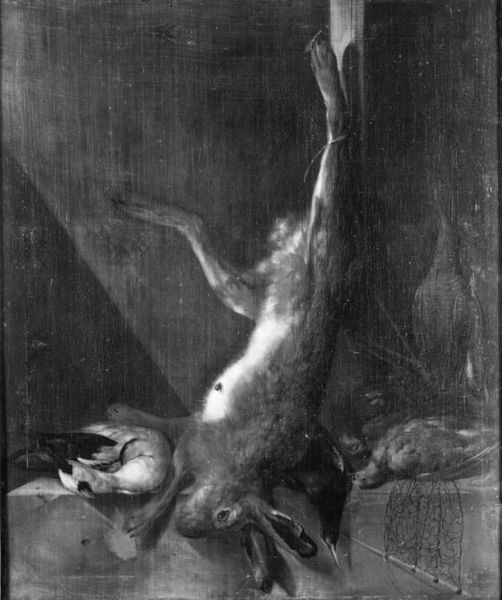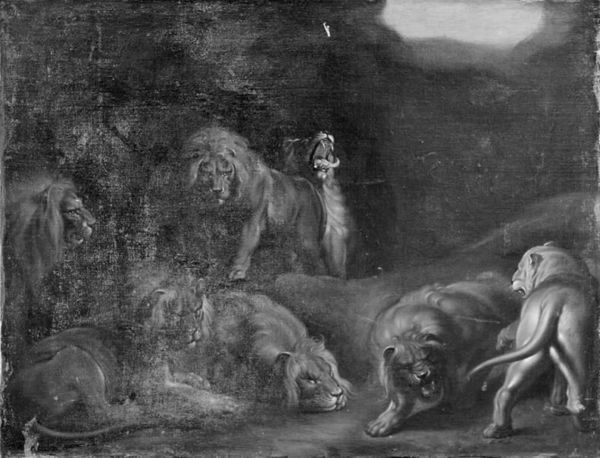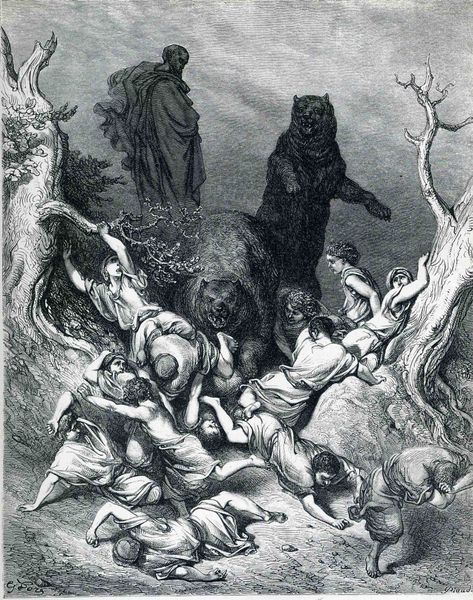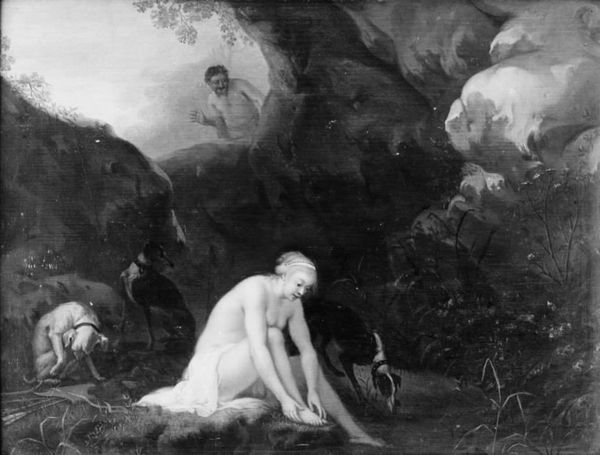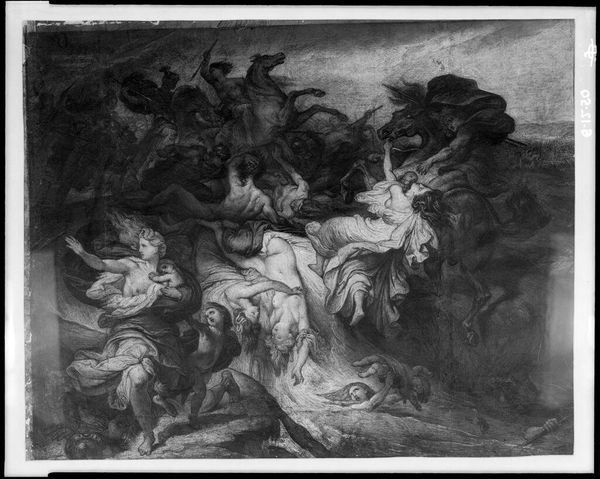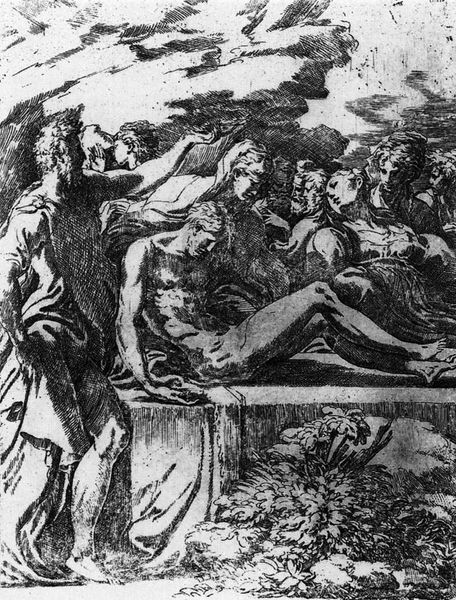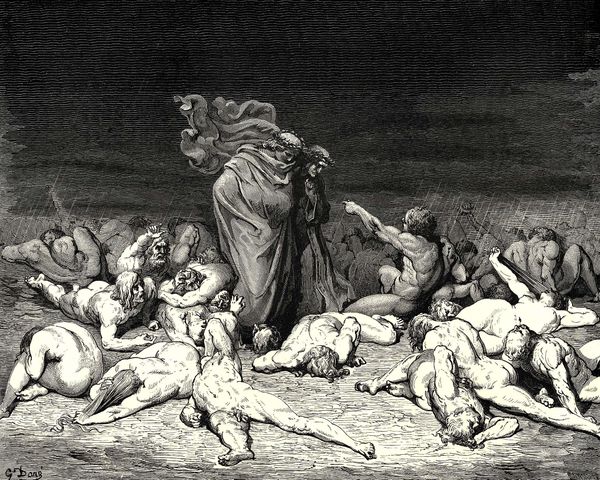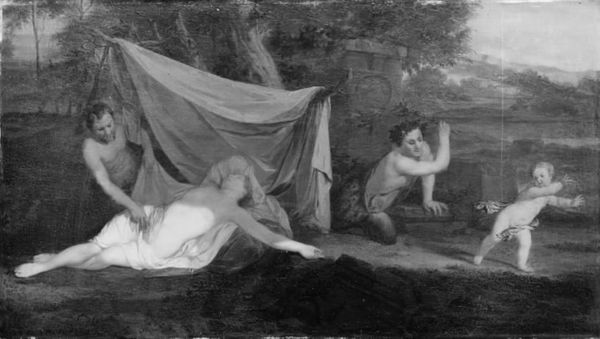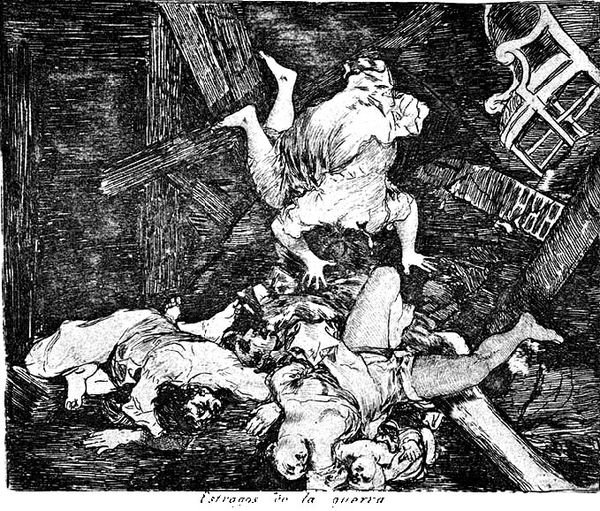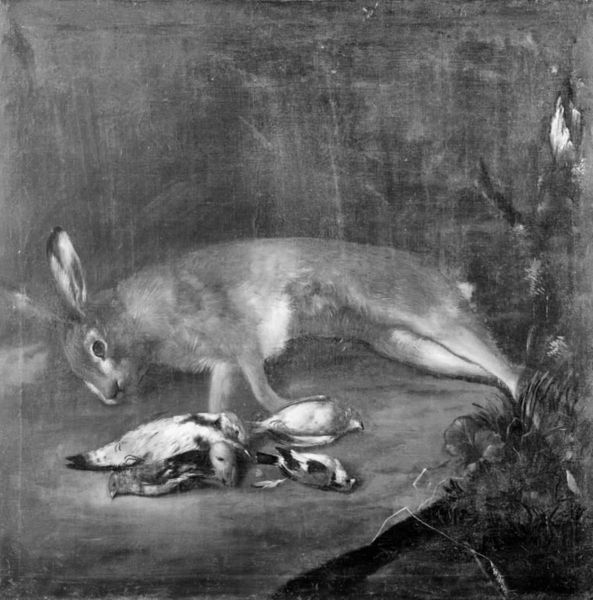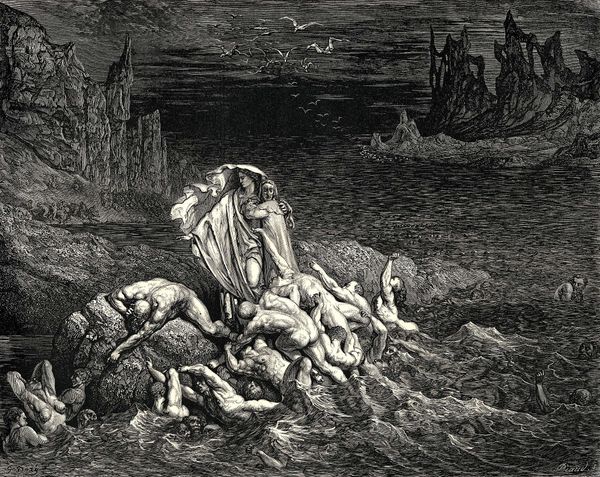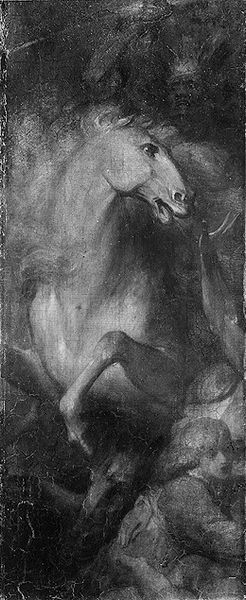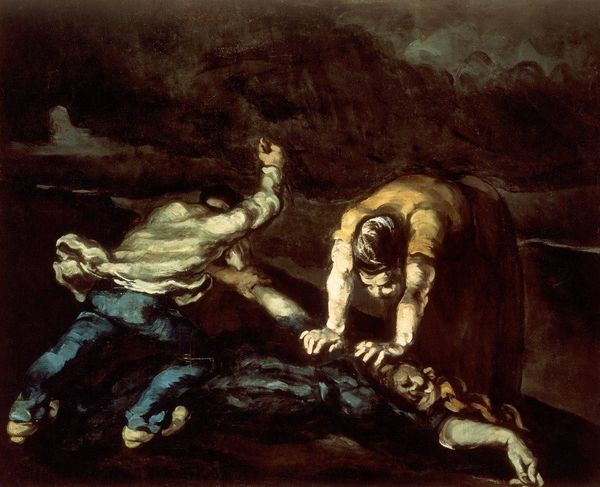
painting, oil-paint
#
baroque
#
painting
#
oil-paint
#
sculpture
Dimensions: 81.1 cm (height) x 104.5 cm (width) (Netto)
Editor: So, here we have "The Spoils of the Chase," painted with oil paints between 1648 and 1651 by Joannes Fijt. The painting presents a rather stark image of dead animals. What stands out to you about this piece? Curator: The painting is indeed a still life, but through a materialist lens, it’s less about death and more about consumption. Consider the resources expended: the land required for hunting, the labor of the hunters, the production of hunting tools, and even the oil paint itself. The texture of the fur and feathers almost screams to be felt; the labor implied by the making is intense. Don’t you find yourself pondering the socioeconomic status embedded here? Editor: I suppose I hadn’t considered that angle. The detail certainly draws the eye and does invite one to touch, to truly inspect the textures, to see what those objects were like at that time. Curator: Exactly. These lavish depictions became popular during periods of economic growth and mercantile power. Art like this visualizes status. One could also think about this style as an example of conspicuous consumption, wouldn’t you agree? Editor: Certainly! It is visually flaunting an excess of product that resulted from some kind of human capital and hard labor, yes. The work definitely shows how one's lifestyle relates to their interaction with material reality, as well as nature, its resources, and labor. Curator: Right, consider how the Dutch Golden Age used paintings of banquets with half-eaten pies and meat. These served as morality reminders. Do you believe this one may function similarly or, perhaps, in a more celebratory manner? Editor: That is definitely something to further consider as well, especially with paintings that try to reflect some kind of material or spiritual meaning. Thank you for offering that lens to observe. Curator: My pleasure! Reflecting on art with focus on means and relations of production gives us valuable social understanding.
Comments
No comments
Be the first to comment and join the conversation on the ultimate creative platform.

